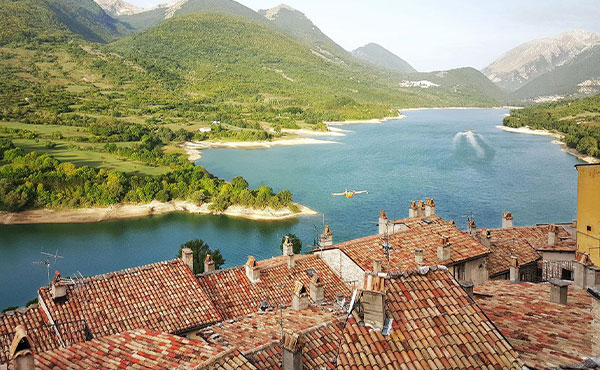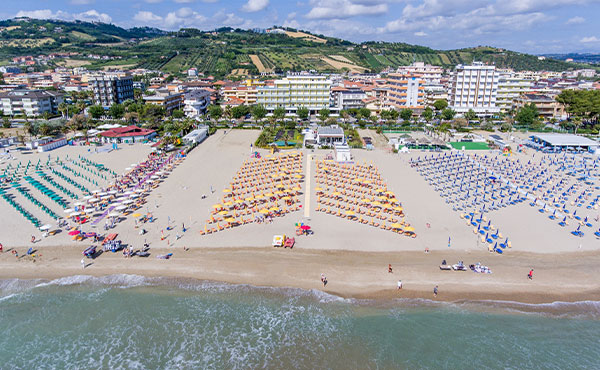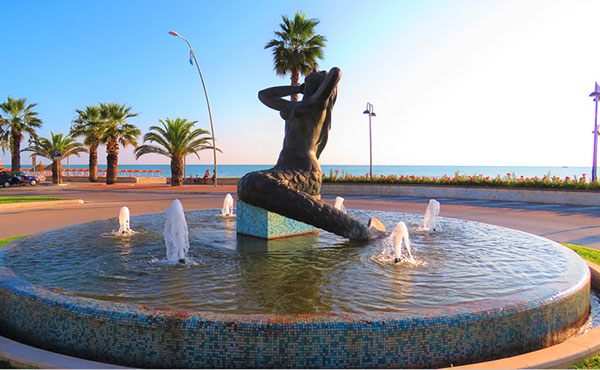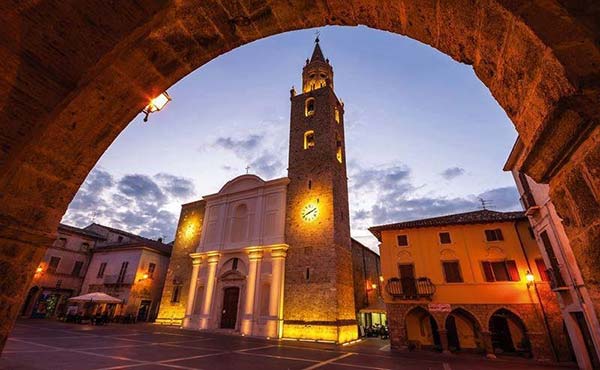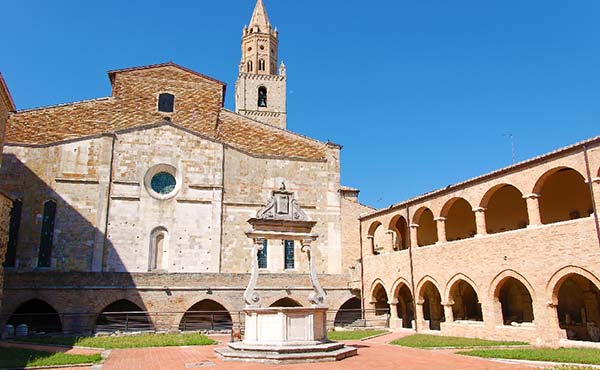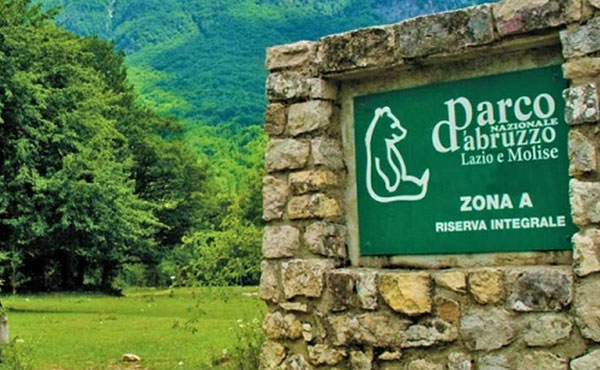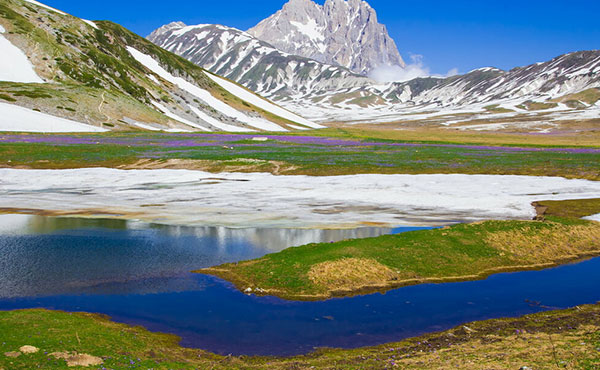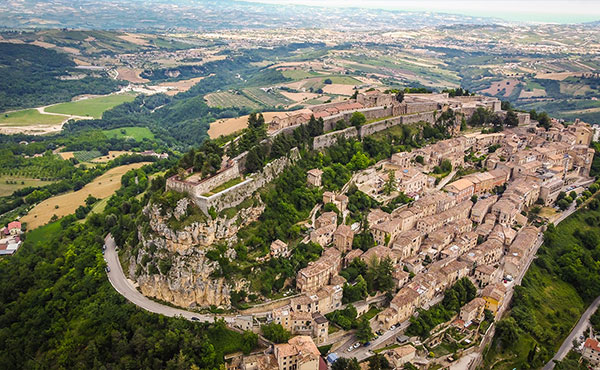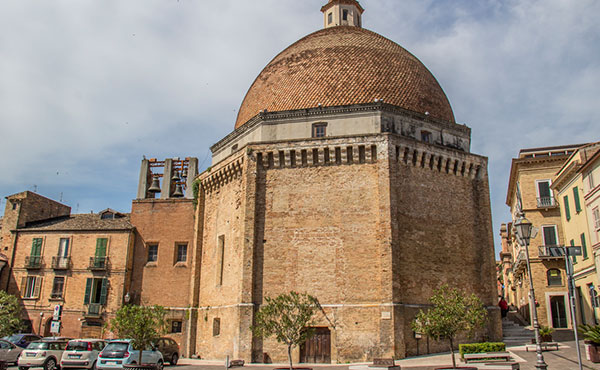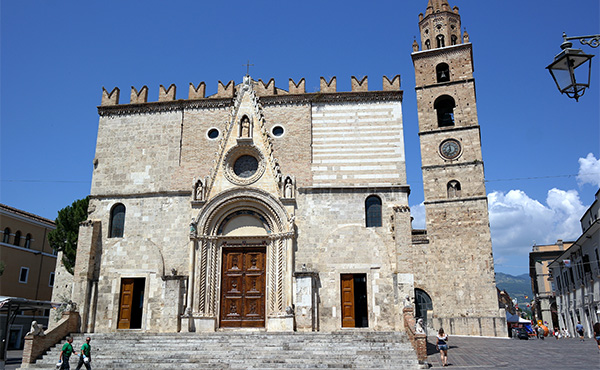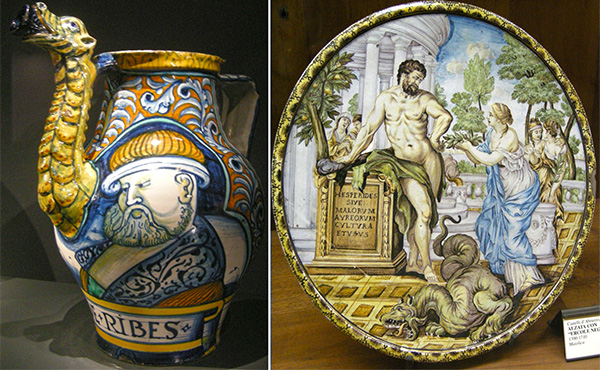ABRUZZO
Thanks to its proximity to the central Apennines and the Adriatic coast, the Abruzzo region offers the visitor a wide range of possibilities for having fun and enjoying pleasant relaxing holidays in all seasons of the year. Winter, thanks to the ski resorts such as Rivisondoli, Roccaraso and Pescocostanzo, offers numerous opportunities for recreation and entertainment. In summer, the cities come alive with festivals, historical re-enactments, music and entertaining shows with a folk flavor. The Abruzzo National Park, a natural resource of the area, represents one of the most interesting destinations in the region where it is possible to see numerous species of protected animals such as the Marsican bear, wolf, chamois, roe deer and many others. Abruzzo is also a land characterized by castles, Romanesque churches, ancient villages and interesting museums where you can discover works of art with an ancient flavour. Particularly interesting are the Museum of the People of Abruzzo in Pescara and the National Museum of Abruzzo in L'Aquila. To see in Abruzzo: the Abruzzo National Park, the Sirente-Velino Park and the Gran Sasso National Park. The coast is particularly famous for its vast beaches of fine sand, where you can spend pleasant holidays dedicated to relaxation and fun. The food and wine of this region is able to offer typical flavors of Mediterranean cuisine such as "maccheroni alla chitarra", pasta, saffron and cheeses, combined with a good quality Abruzzo wine.
ALBA ADRIATICA
Alba Adriatica is one of the most important tourist centers on the Abruzzo coast, which contains the best of a summer holiday. Here the simplicity and tranquility of small seaside resorts blend with the comfort and vitality of larger holiday resorts, and every service is at the complete disposal of the visitor. The long silvery-white beach that blends into the clear sea, framed by the Mediterranean charm of the palms and pines and the intact nature of the landscape strike tourists, who return in large numbers every summer to Alba Adriatica, repeatedly awarded the Blue Flag of Europe and with mentions in the Blue Guide of Legambiente, for respect for the environment and the quality of services. The seafront is the vital center of the city and offers many stimulating activities: walking or cycling along the coast, in the pine forest or on the hills, picnics in the open air, water sports and shopping in the local shops or in the more fashionable ones fashion. And for those who love to discover the secrets of Abruzzo, efficient excursion services are available to the Gran Sasso chain, the Abruzzo National Park and the most fascinating medieval castles and villages. The active and lively population, promoter of a strong economic and social development based on the leather industry and tourism, will offer you the tastiest food and wine products of the Abruzzo cuisine and many events that will color your summer: parties on the beach or in discos and clubs of all kinds, parades, concerts and comedy and theater shows. And tourists more tied to traditions will appreciate the festivals, markets and summer carnival of Alba Adriatica, which with its allegorical floats, street artists, dancers and ethnic groups intrigues and entertains until late at night.
Tortoreto
Tortoreto the city of Abruzzo which has an ancient part, located on the hill, Tortoreto Alta and a more recently developed part on the seafront of the Abruzzo coast: Tortoreto Lido. Tortoreto Alta looks at the sea from a height of 227 m, a medieval village which joins its hamlet in a harmonious hilly landscape, formed by luxuriant Mediterranean scrub: vineyards and olive groves as far as the eye can see and in the distance the remains of an ancient Roman villa (2nd century BC). During the summer season there is no lack of a series of cultural events suitable for every type of need, such as the well-known historical re-enactment "Il Palio del Barone". Tortoreto Lido is the most modern and young part of the city; located right on the seafront, the area is full of palm trees, well-equipped beaches with bathing establishments suitable for any type of holiday. Summer evenings in Tortoreto Lido are spent among the numerous restaurants and clubs located a few steps from the fine sandy beach, and there is no shortage of clubs, bars and discos for those who want more fun evenings. In summer there are numerous food and wine events organized by the city, for lovers of good fish the typical products festival (July), the clam festival and the fish feast (August) are not to be missed. Near Tortoreto it is possible to entertain young and old with the numerous water games, slides and entertainment of the AcquaPark Onda Blu.
Campli
Important fiefdom of various families starting from the 12th century, it reached its maximum splendor from 1538 to 1734, under the dominion of the Farnese family, so much so that it assumed such importance as to be considered superior to the city of Teramo. The decline of the cities first occurred around the eighteenth century, due to the devastation of the Napoleonic troops and was aggravated in 1860 due to a looting by the Bourbon militias. Worth mentioning are the Church of S. Paolo with the famous Scala Santa, so called because after 1776 the custom of granting the indulgence to those who climbed it on their knees, the Palazzo Comunale, the Church of S. Maria in Platea , the Church of S. Francesco d'Assisi, the Palazzo Farnese. In the immediate vicinity, in the open countryside, we note the splendid church of S. Pietro in Campovalano and the remarkable necropolis, located in the Campovalano plain. Festivities and fairs: 22nd August, Italian Porchetta Festival; 1st September Feast of the Madonna.
Atri
Ancient Hatria seems to have given its name to the Adriatic Sea and the birthplace of the family of the emperor Hadrian. Roman colony, Atri suffered the fall of the empire the barbarian invasions and numerous foreign dominations. Under the dominion of the Acquaviva family, who governed the city uninterruptedly from the 12th to the 18th century, it reached its maximum splendour. Religious symbol of Atri is the Cathedral of S. Maria Assunta, built in 1285 and recently restored. The adjoining Museum is also noteworthy, which preserves precious relics. Worthy of a visit are the majestic Palazzo Ducale degli Acquaviva, the current town hall, the Church of S. Reparata and many other monuments of notable historical and artistic importance. Atri is famous for the ancient fountains, the caves and above all for the gullies, true architectures of nature. Festivities and fairs: 15 August parade of aprutini floats with folk groups; 18 August festival of tagliolini and beans, ham and cheese; August 19 Feast of St. Gabriel.
Abruzzo National Park
It is the oldest national park in Italy, the result of the work and passion of scholars and ethologists who noted the uniqueness of the flora and fauna of the Marsica area. It was institutionally recognized in 1923 and will be expanded over the years to include the current territory, divided between the regions of Abruzzo, Lazio and Molise. Its nerve center is Pescasseroli. It is a park of great importance because numerous protected animal and plant species are conserved and studied here, the symbol of the park is the Apennine wolf, but you can also easily spot the lynx, the Abruzzo chamois, the deer and the roe deer and sometimes the Marsican brown bear. Among the birds, which are also very common in the park (there are over 230 species), the majestic golden eagle stands out, which comes to lay its eggs on these hills.
Gran Sasso National Park
The Gran Sasso, the highest massif in the entire Apennine chain, extends over the three Abruzzo provinces of Teramo, L'Aquila and Pescara. The highest peak is the Corno Grande, which reaches almost 3000 meters above sea level. The Gran Sasso and Monti della Laga National Park authority manages and takes care of the protected area by organizing initiatives and coordinating environmental and naturalistic projects.
Civitella del Tronto
Perched on a rocky outcrop in the Salinello Valley, Civitella represents the last Bourbon fortress. The fortress dates back to the thirteenth century and has always been one of the most disputed castles in the region due to its strategic position. It suffered the most serious damage between 1860-61 by the Piedmontese troops. A skilful restoration that took place in the eighties of the last century allowed the external walls and part of the original rooms to be kept intact. It houses the Weapons Museum. Of note are the church of S. Francesco, adjacent to the ancient convent, the Sanctuary of S. Maria dei Lumi, of Romanesque origin and the Abbey of Montesanto, a Benedictine monastery built according to tradition at the behest of S. Benedetto da Norcia in 542. Little distant are the suggestive gorges of Salinello, dominated by the ruins of the picturesque Castel Manfrino, built, according to tradition, by Manfredi di Svevia. Festivals and fairs: 13-14-16 August "A la corte del Governatore", costumed banquet inside the fortress.
Giulianova
The ancient Roman Castrum Novum changed its name to Castel S. Flaviano, in honor of the Patriarch of Constantinople. After experiencing looting and raids by the Saracens, Giulianova was rebuilt in the late 14th century by the Duke of Atri Giuliantonio Acquaviva , in honor of which she assumed the name of Julia. Not to be missed: the Sanctuary of the Madonna dello Splendore, the medieval tower "Il Bianco" and the cathedral of San Flaviano, with an octagonal plan, which with its gigantic dome dominates the whole city. In Giulianova Lido, an established seaside resort, we note the Church of S. Maria a Mare, largely rebuilt after the very serious damage suffered during the last war. Feasts and festivals: July week of the sea, with various events and tastings of dishes based on oily fish; July 30 review of the musical bands; 8-14 August Feast of the Madonna del Portosalvo, which ends with the evocative procession on the sea.
Teramo
The ancient Interamnia (city between rivers, because it is crossed by the Tordino and Vezzola rivers) experienced its maximum splendor in the imperial age under Augustus and Hadrian. The presence of the Roman theater, in the heart of the historic center, built in 30 BC still bears witness to this. C., nowadays used for concerts and events, and the Roman amphitheater, which could hold at least 4,000 people. Not far away is the Cathedral of S. Berardo, symbol of Teramo, where a precious silver frontal is kept, the work of the well-known Abruzzo artist Nicola da Guardiagrele. The facade is impressive, embellished with a rose window and lace and flanked by the mighty bell tower. To visit the Church of S. Domenico, in Romanesque style, the ancient Cathedral of S. Anna and the Church of the Madonna delle Grazie. The decadent Palazzo Melatino symbolizes the importance of the city during the Renaissance. Also noteworthy are the Archaeological Museum and the Civic Art Gallery. Festivities and fairs: End of June - beginning of July Feast of the Madonna delle Grazie; end of July festival of ham, cheese and homemade bread. Worth noting are cultural and sporting events such as the Literary Prize and the Interamnia Cup.
Castelli
Known in the world for its ceramics, whose production flourished since the XIII century and, in particular, starting from the XVII-XVIII centuries. Of great interest are the Ceramics Museum and the Church of S. Donato, whose ceiling was defined by Carlo Levi as "the Sistine Chapel of Italian majolica". Home to important ceramists, Castelli is defined as the "Village of ceramics" and every year, from the last Sunday of July to the first of September, the appointment with "Agosto a Castelli" takes place, a famous ceramic craft exhibition, which attracts many tourists and ends with the launch of the plates.

